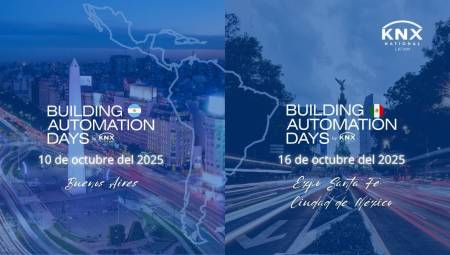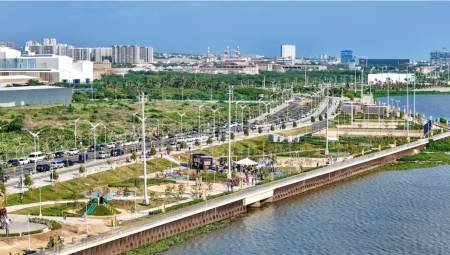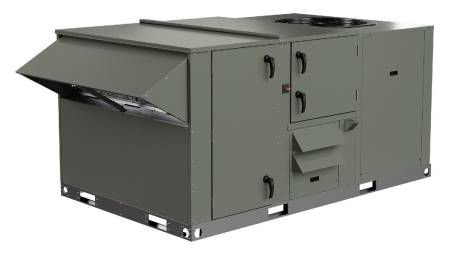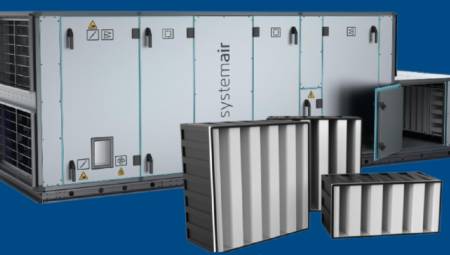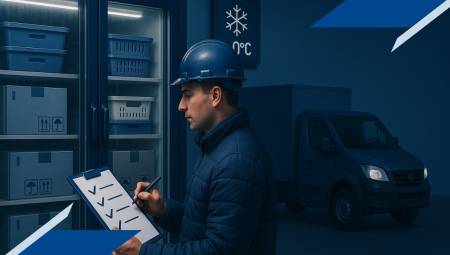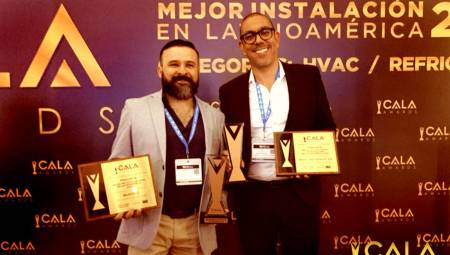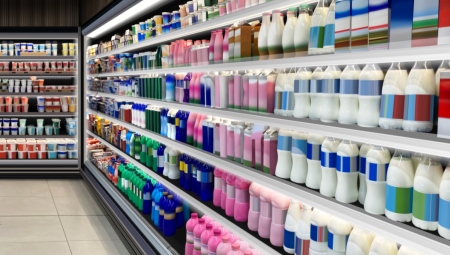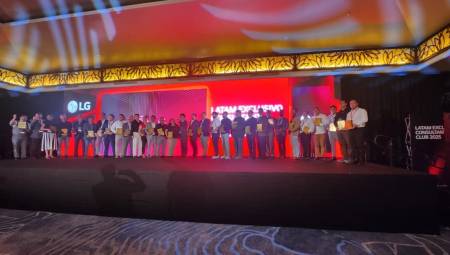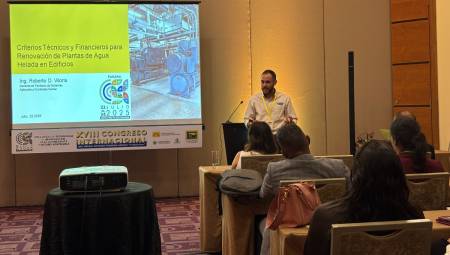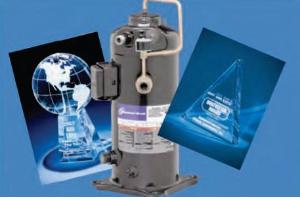 The author analyzes the factors that make this technology one of the most suitable for air conditioning systems. Advantages that are evident in the total cost of the acquisition of the equipment, its operation and maintenance.
The author analyzes the factors that make this technology one of the most suitable for air conditioning systems. Advantages that are evident in the total cost of the acquisition of the equipment, its operation and maintenance.
By: Carlos Obella*
Air conditioning systems, whether liquid coolers or direct expansion systems that apply Copeland Digital Scroll technology, have significant comparative advantages when considering the associated costs over the life of the equipment. The sum total of these associated values, which in English is called "Life Cycle Costs" (LCC), corresponds to the total cost in dollars paid to own the equipment, operate it and maintain it throughout its useful life.
In the case of air conditioning systems, these costs are linked to:
- The technology and design of the compressor.
- The architecture of the system.
- The comfort provided.
- The simplicity and reliability of the system.
- The actual energy consumption during operation.
This article briefly discusses each of these factors and their impact on the total dollar cost over their lifetime.
The comparison is between systems that have Digital Scroll technology, versus similar ones equipped with hermetic compressors, both scroll and rotary, with devices that allow them to be operated at variable speed, popularly known as "inverters".
a) Compressor Technology and Design
In a compressor with digital technology most of the internal components, among which the engine stands out, work with low pressure or suction. The suction gas returns to a temperature between 10 and 15°C, which helps cool the compressor engine (Fig. 1). An airtight electric motor, working in these conditions, presents better performance, especially when it must operate under extreme environmental conditions, at very high ambient temperatures.
Unlike the previous ones, the hermetic motors of the rotary and scroll compressors with "inverters", as well as most of their internal components, are subjected to the gas conditions of the high pressure or discharge side, at no less than 80°C.
This feature makes these compressors more sensitive to environmental conditions with very high temperatures, such as those that can be found in large populated regions of Latin America. This design has been adopted, among other reasons, to try to solve lubrication problems generated during operation at low rotational speed, when it becomes difficult, if not impossible, to drive the lubricating oil towards the moving parts of the compressor, only by centrifugal force. While high pressure contributes to lubrication by driving the oil, engine performance and operation at high ambient temperatures are seriously affected.
Scroll compressors with digital technology have a unique and patented design feature that allows, during operation at full capacity, to keep both spirals together with sufficient force so that gas leaks do not occur between the compartments that form the spirals when interacting with each other, without the need to use seals on the edges of the spirals (susceptible to wear), and without affecting the performance of the compressor, with the consequent mechanical losses due to excessive friction. This optimal force is the result between the discharge pressure, the suction pressure and an intermediate pressure, acting on certain surfaces of the so-called "floating seal", a key piece of Copeland Scroll technology to achieve this effect.
There are no such design features in rotary compressors. The blades of the rotary roller are in permanent contact with the wall of the compression chamber, printing a constant force, which does not adjust with the variation of pressure and temperature. Nor do these features exist in scroll compressors that operate with "inverters". In both cases, this significantly affects the performance of the compressor due to friction, especially when operating at very high ambient temperatures.
Refrigerant in the liquid state, being incompressible, can seriously damage the mechanisms of a compressor. Digital Scroll compressors have a unique and patented design feature that allows the spirals to separate radially, in the presence of drops of coolant, oil or both, during the compression process. This separation also avoids potential damage to the spirals, caused by small particles, impurities or contaminants that may be present in the system. Again, neither rotary compressors nor scroll compressors operating with "inverters" possess these design features.
Digital scroll compressors have several internal devices that ensure a more reliable operation, without the need for additional external protections:
1. Motor Protector: The motor is protected against temperature and amperage. If the current increases and/or the temperature of the motor rises, the protector opens the electrical circuit internally and stops it. The engine runs again once it cools.
2. Thermal disc: It is a bimetallic disc that opens when the discharge temperature exceeds the safety limits, causing the compressor to stop compressing and stop by the action of the thermal protector (1). The disk automatically closes when the temperature drops and reaches the limits of safe operation.
3. Relief Valve (IPR): In case the pressure rises inside the compressor above the safety limits, the IPR valve opens and the compressor stops compressing. The thermal protector of the engine acts later (1), stopping the gear.
4. Protection against vacuum operation: If the suction pressure drops below the safe operating limits of the compressor, the floating seal, which holds both spirals together, is discharged, the spirals are separated, and the compressor stops compressing. Work restarts as soon as the suction pressure normalizes.
Rotary compressors only have a simple internal heat shield for the engine, while scroll compressors that operate with "inverters", for the most part, do not have any type of internal safety device. The protections come from external devices that are part of the unit's control system, adding complexity and cost.
(b) System architecture
How is the system technologically shaped to modulate capacity?
Let's compare three systems of similar capacity. Suppose one of these systems has two Copeland Scroll compressors, one of them Digital and one of fixed capacity. The second system, two rotary compressors of variable speed, with devices of variation of the rotation speed type "inverter" of direct current (DC), one for each compressor; and the third has two scroll compressors, one of them equipped with an "inverter" device similar to the previous case, while the remaining compressor is of fixed capacity.
How does each of these system architectures respond to a variation in the refrigeration load that requires capacity modulation.
In the first of the systems (two Copeland Scroll compressors, one fixed plus one Digital), when the required capacity is below 50%, the digital compressor is responsible for modulating it. We'll see a little later how it does.
When the load variation requires the capacity to increase above 50%, the fixed capacity Copeland Scroll compressor starts and the digital compressor is now responsible for modulating up to 100% of the available capacity.
For the second system architecture (two rotary with "inverters", one per compressor), when the capacity is less than 50%, one of the two compressors modulates by means of its corresponding variable speed drive. Both compressors modulate through their respective "inverters" when the variation of the load requires the capacity to be more than 50% of the total available.
Finally, in the system with two scroll compressors, one with "inverter"; when the capacity requirement varies below 50% the compressor with "inverter" modulates. The fixed capacity starts when the requirement is above 50% of the total available. From then on, the compressor with "inverter" is responsible for modulating, up to 100%.
Let's see how each of the technologies involved in each system architecture performs modulation:
A compressor with digital technology has, like all scroll technology, two identical spirals, 180° out of phase, one of them fixed and the other mobile or orbiting, solid to the rotor of the engine. The compressor compresses, as long as both spirals are kept in axial and radial contact. Digital compressors have a unique device that allows the spirals to separate axially just 1mm, which is enough for the compressor to stop compressing. This device works with a small piston, subjected to discharge pressure, on the fixed spiral (Fig. 2).
A solenoid valve allows this pressure to be relieved when the digital signal, coming from a controller, opens it. When this occurs, the fixed spiral is separated by just 1mm from the moving spiral, thanks to the action of a spring, and the compressor stops compressing (unloading). The engine is still running, but consuming only 10% of the total power. When the digital signal closes the solenoid, the piston solidary to the fixed scroll returns to receive high pressure, overcomes the resistance of the spring that kept it raised, both spirals come together, and the compressor recompresses normally (loaded). A Copeland Digital Scroll compressor can supply any capacity, between 10 and 100%, simply by loading and discharging the spirals at successive regular intervals. For example, for regular and successive intervals of 10 seconds, if the spirals are kept discharged (separated) for 2 seconds and joints (charged) 8 seconds, the compressor responds to demand with 80% of its capacity (Fig. 3).
A minimum of 10% modulation is required to ensure cooling of the compressor engine by suction gas. The spirals must be together at least one second in an interval of 10 seconds (10%) for this to be possible. In a system of two scroll compressors, one fixed and one digital, the minimum 10% capacity achieved by the digital individually, is equivalent to 5% of the total available capacity of the equipment.
The "inverter" technology modulates the capacity by varying the frequency and, in turn, the rotational speed of the electric motor, which is directly proportional to the frequency according to the signal received from the unit controller, depending on the variation of demand, both in a rotary compressor and in a scroll equipped with an "inverter". Compressors that modulate their capacity through this type of device have limitations in the minimum frequency to ensure lubrication at low rotational speed. Usually, the minimum frequency is on the order of 30Hz, which puts the minimum individual capacity possible per compressor on the order of 40 to 50%, depending on the nominal frequency of the supply current (50Hz or 60Hz).
In a compressor equipped with an "inverter", modulation is done in jumps of 8 Hz frequency. If the minimum possible frequency is 30Hz, as we have seen above, the next step of demodulation will be 38Hz, then 46Hz, and so on, so the modulation is not continuous or uniform. If the variation of the load requires a capacity below the minimum of 30% or 25%, depending on the nominal frequency (50Hz or 60Hz), in a system of two compressors, the equipment must have a hot gas diversion device. This is a fairly primitive method of modulating the capacity, without any energy savings, since it has been consumed by compressing the gas before being diverted by solenoids through the "Bypass".
c) Comfort Supplied
A system that applies Copeland Digital Scroll, can maintain the temperature in a range of ±0.5°C, thanks to the continuous variation of the capacity seen above, which allows to accompany much better the variation of the demand (Fig. 4). In turn, this technology allows to reduce the ambient humidity to partial loads in direct expansion systems, thus improving the interior comfort. This is achieved thanks to the digital modulation method allowing to maintain lower average interior evaporator coil temperatures at partial loads.
While a system equipped with rotary compressors with their respective "inverters" can keep the temperature in a range of ± 0.5°C under certain conditions, effective humidity control will not be possible as in the previous case. When inverters act to modulate capacity, the refrigerant mass flow (Lbs/Hr) decreases as the compressor's rotational speed decreases. This causes the average temperature of the coil to be higher, which restricts its ability to condense the moisture of the air circulating through it, which affects the feeling of interior comfort. This explanation is also valid for a system with two scrolls, one of them with an inverter. But unlike the previous one, in this case the temperature can be controlled in a less adjusted range of ±1°C, under certain conditions.
The mechanics of the modulation of the system with digital scroll technology compressor allows an instantaneous response speed to sudden changes in load, without having to go through intermediate stages or frequency variation ramps, as is the case of systems that have "inverters". This advantage allows to keep the variation of the temperature within a very small range, even in the face of sudden and sudden changes in the load.
In this type of system the mechanics of oil return are very simple. The oil only leaves the compressor while it compresses. The normal average oil circulation is on the order of 1%. Even when the oil leaves the compressor while it compresses, the gas velocity is high enough to push and return the oil to the compressor from the system. In general, no additional systems or devices are needed to return the oil to the compressor, except in extremely long circuits of 100 meters of pipe or more, applied in variable refrigerant volume systems, commonly called VRV (Fig. 5), where manufacturers usually apply oil separators for greater operational safety.
Systems with "inverters" need a rather complicated oil return system, due to the variability of the average circulation, as a result of the variation in the rotational speed. This average is between 1 and 2%, operating at a nominal frequency, depending on whether it is 50 or 60Hz. At higher frequencies (90Hz, for example), the average oil circulation can reach up to 8%. Conversely, when the frequency is around 30Hz, the oil circulation may be even less than 1%, with the aggravating factor that at such low speeds, there may not be enough refrigerant mass flow to push the oil back into the compressor. Because of all this, inverter systems employ two methods to return the oil to the compressor: oil separator and oil return cycle.
The separator has limited efficiency, so its application is combined with oil return cycles. Every 2 hours the "inverter" device should increase the speed of the compressor for about 10 minutes. Throughout this 10-minute period, the mass flow and velocity of the refrigerant gas increase and push the oil that is trapped in different parts of the system, to return it to the compressor. But this operation is not entirely efficient.
When the speed of the motor increases, its electrical consumption also increases. In addition, the cooling capacity also grows unnecessarily. In case the demand of the room is not enough, the "Bypass" bypass solenoid valves open to divert the additional capacity not required. Both this and the additional energy consumed by the motor to increase its speed, imply a loss of energy that becomes cumulative throughout the annual operation of the equipment in real conditions of operation at variable load.
d) Simplicity and reliability of the system
The system used by Copeland Digital Scroll is very simple, both mechanically and electronically. For example, "Bypass" systems, described for systems with "inverters", and their respective solenoid valves, are not necessary. In addition, the principle of modulation is mechanical, so the algorithm employed by the electronic controller is much simpler.
In contrast, systems equipped with "inverters" are much more complicated, both mechanically and electronically (Fig. 6 and 7). In the case of a system with two rotary compressors with their corresponding variable speed drives, the mere fact of having an "inverter" per compressor, makes them more complicated.
Variable refrigerant volume equipment (Fig. 5) has a very large refrigerant gas load and rotary compressors are very sensitive to potential liquid returns, so this type of system has several circuits controlled by solenoid valves and tanks to manage the coolant depending on the load variations (Fig. 6). There are at least nine solenoid valves in the outdoor units of VRV equipment equipped with rotary compressors and "inverters", which control various liquid diversion circuits.
Fig. 6 (Mechanical Complexity of a System with "Inverters")
The global air conditioning industry recognizes the reliability of Copeland Scroll compressors. This recognition is reflected in the more than 70 million compressors installed worldwide. The Copeland Digital Scroll compressor is built on the same basic product platform, which has been so successful and accepted. Each part of a compressor is subjected to an exhaustive sequence of reliability tests. For example, the solenoid valve that controls digital modulation has a proven service life of more than 40 million opening and closing cycles. This equates to more than 15 years of continuous operation.
In comparison, systems with "inverter" compressors have a lot of electronics on their boards, which generate heat. This makes them sensitive when operating in environments with high temperatures, increasing the risk of failures in the electrical board and electronic circuits. Even the electromagnetic interference emitted by the circuits of the variable speed drives can affect the reliability of other equipment such as TV, computers and various equipment, so the application of expensive electronic filters is required to reduce such emissions to acceptable levels. These filters add even more complexity, additional cost, and risk of potential failures.
The electronic complexity that we have been talking about is sensitive to variations in frequency and voltage in the electrical supply. This type of situation is frequently seen in certain areas of Latin America, due to the lack of sufficient and reliable electrical infrastructure.
As we have said before, the modulation of a digital scroll technology compressor is mechanical (See animation in Fig. 7), so there is no generation of electromagnetic interference as in the previous case. This makes this technology ideal for critical applications such as computer centers, telecommunications centers and hospitals.
e) Energy consumption in the operation
The energy efficiency of a system depends on various factors such as the technology applied to the compression mechanism, the heat transfer and the components involved in it (coolant, fans, coils, etc.), in addition to the mechanical, electrical and electronic architecture of the system.
We have seen in previous paragraphs, various comparisons related to the technology applied for compression between rotary compressors and scrolls with "inverters", versus digital scroll compressors. Leaving aside the factors related to heat transfer, which depend on the design of the manufacturer and are relatively independent of the compression technology applied, let's focus on analyzing those factors that have to do with the mechanical and electronic architecture of the systems.
For example, the large number of solenoid valves needed to administer the coolant and divert the flow during the "Bypass" cycles, generate pressure drops that affect the performance of equipment with "inverters". Another example has to do with the need to implement oil return cycles and with the energy consumed by this type of device.
Electronic architecture is also an important factor. The complexity of systems equipped with "inverters" (Fig. 8) causes the boards to generate and dissipate a large amount of heat, which is nothing more than energy that is not used for the specific purpose of the equipment in question.
Some of these factors generate energy losses that are not taken into account when carrying out laboratory tests to measure the energy efficiency of equipment operating at a specific condition; therefore, comparisons made based on values of COP (coefficient of performance at full load) or IPLV (equivalent, but at partial load) obtained in laboratories, are not necessarily representative of the actual performance of the equipment during its annual operation, subjected to very variable conditions, not foreseen or reproduced during the test. Losses such as those generated to the operator of the drive to move from one rotation speed to another, or the need to operate oil return cycles during operation at partial load, are not taken into account during these tests.
Final conclusions
To recap, Life Cycle Costs (LCC) is defined as the total dollar cost of owning, operating, and maintaining equipment throughout its lifetime.
From all the above, it is clear that those systems that have Copeland Digital Scroll will have a lower LCC than equivalent systems equipped with "inverters", thanks to the technology applied for modulation, which allows simplifying the architecture of the system, optimizing its cost and reducing the negative influence that this architecture may have on the performance of the equipment.
Systems with digital scroll compressors allow better control of humidity and temperature, which is directly related to the comfort provided.
The simplicity of both the electronic and mechanical architecture of digital systems ensure greater reliability and service life.
Finally, the combination of all the aforementioned qualities means that the equipment with Copeland Digital Scroll has a lower operating cost compared to similar systems equipped with "inverters", which will be reflected in a lower energy consumption in real operating conditions throughout the useful life of the equipment.
For more details, see the Online Information System (OPI), going to http://www.emersonclimate.com/espanol/.
*Carlos Obella is a mechanical engineer specialized in thermodynamics. He has more than 20 years of experience in the air conditioning and refrigeration industry and is currently the technical director for Latin America for Emerson Climate Technologies Inc.


